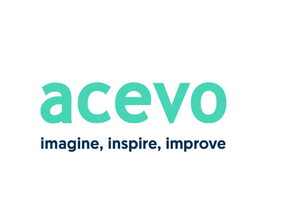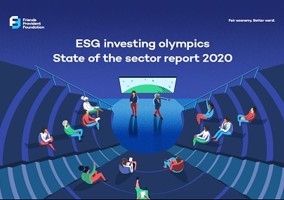Tackling global climate change is a pressing concern and all parties will have to commit to decarbonisation targets, whether they be governments, corporations or investors. “It is the power of the private sector that really pushes governments to come up with ambitious goals,” says head of sustainability and responsible investment strategy at Legal & General Investment Management (LGIM), Meryam Omi. “At LGIM, we aim to mobilise all non-state actors to commit to net-zero targets through the Race to Zero campaign. The idea is that everybody aims for net-zero greenhouse gas emissions by 2050.”
Asset holders, including charities, have a vital role to play in achieving this target. “It’s not about only investing in green companies; it’s about investing in line with the trajectory of decarbonisation,” continues Omi. “We have been pushing companies for a long time on environment issues and they are realising that it makes strategic sense to be embrace this agenda. This is not a CSR exercise or something they do on the side. We have aligned all our engagement to net-zero, so asset owners, who are committed to tackling environmental issues, can be reassured that LGIM is engaging with companies on their behalf to achieve global targets.”
Measuring success
One of the key elements to the success of this campaign is figuring out what decarbonisation looks like for different sectors and how it can be achieved across different asset classes. LGIM combines both qualitative and quantitative metrics to measure how a company is performing in relation to the net-zero framework, says Omi.
“Through our quantitative measures, around 1,000 companies are rated based on market standard disclosures, which operate on a traffic light system indicating what key areas they need to address and when they are lagging behind their peers,” she says. “We publish these on our website, which is pretty rare from a mainstream provider’s perspective.”
This “radical transparency” allows companies and investors to see the thinking behind investment and stakeholder voting decisions, and helps to push environmental, social and governance (ESG) disclosure up the agenda across. the “entire investment ecosystem”, says Omi.
The qualitative element employs in-depth, sector-based research on 60 second-tier companies, which may be slower to embrace decarbonisation, and focuses on what LGIM thinks net-zero transition means for them. “There are unique dynamics in each sector, so as investors, we can’t just use one blunt tool to analyse performance,” explains Omi. “We need to be sensitive to those dynamics and push those companies over the line to commit to a net-zero strategy. This in turn influences the whole market.”
Keeping on track
For head of charities at LGIM, Nancy Kilpatrick, this transparency is key. “It’s about encouraging companies to do better,” she says. “We use these metrics as part of our overall ESG investment strategy, whether it be around climate change or other ESG scores, and this drives how much capital is invested in these companies. So tying capital allocation together with transparent assessment and engagement gives rise to a feedback loop that we think is really important and quite unique.”
As well as keeping corporations on track, this level of transparency is beneficial from an investor perspective, says Kilpatrick. “There are literally hundreds of thousands of different ESG funds and strategies out there, so it is critical that we ensure that clients understand what the strategy is trying to do and that it actually meets their needs, not only in terms of investment, but also in regards to their ESG goals. Ultimately, this comes down to the partnership you have with your investment manager.”
As demand for ESG funds continues to grow, this relationship is crucial, says Kilpatrick. “Everyone wants to be investing in the right way, and to adopt ESG strategies, but what does that really mean and what does it look like? It is up to the investment management industry to really try and glean from our clients what is important to them and translate that into implementable strategies that our clients can adopt to help them achieve their goals. We try to make this as mainstream as possible, because climate change affects all of us. It is both a global and a financial issue.”
Omi adds: “I would like to see charities embracing the Race to Zero campaign, along with every other asset owner. It’s a framework that can really work for charity investors and it makes sense from a financial perspective. Moreover, it is a race that we have to win together.”
What we do
We are here to help organisations make the most efficient use of their investments. In a time where the call to the third sector is greater than ever, we partner with our clients to help them achieve their investment goals, whether that is long-term growth above inflation, income, capital preservation or an element of all three. We pride ourselves on offering straightforward, cost-effective solutions to our clients, supported by award-winning client service. LGIM is building on its credentials as a responsible investor to lead the asset management industry in addressing the dramatic challenges posed to by a rapidly changing world. We believe this activity is crucial to mitigate investment risks, capture opportunities and strengthen long-term returns for our clients.
Meryam Omi is head of sustainability and responsible investment strategy and Nancy Kilpatrick is head of charities at Legal & General Investment Management
Related articles












